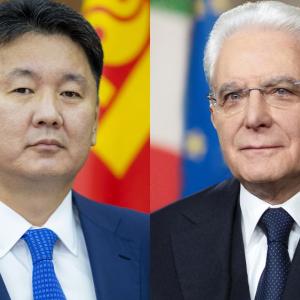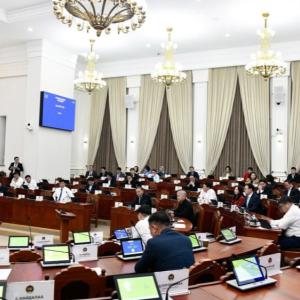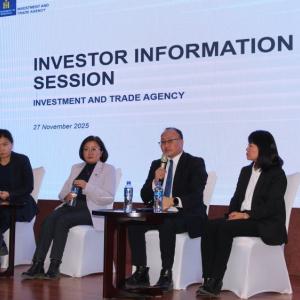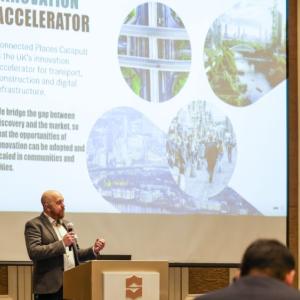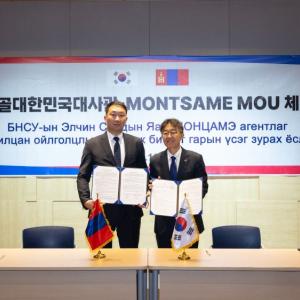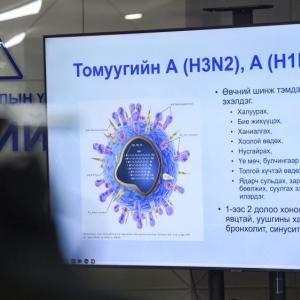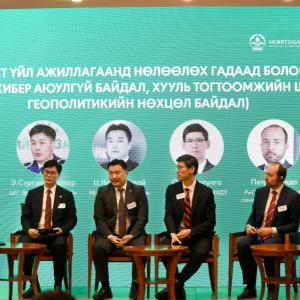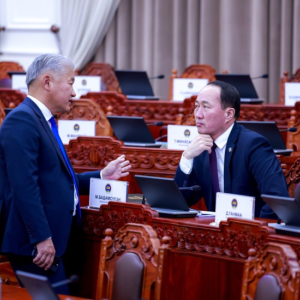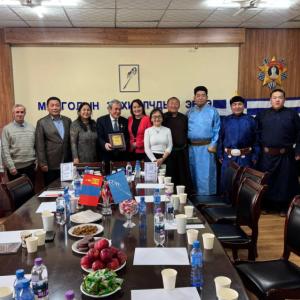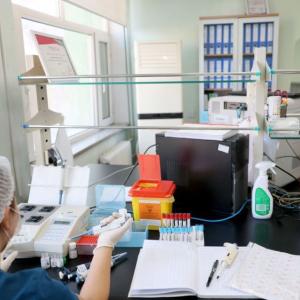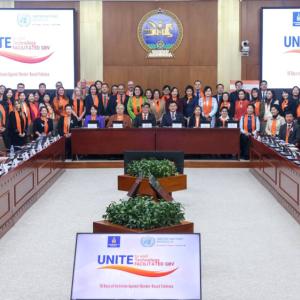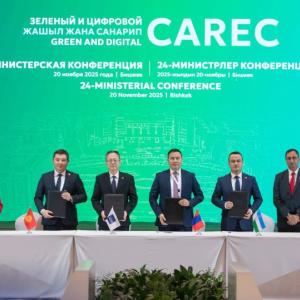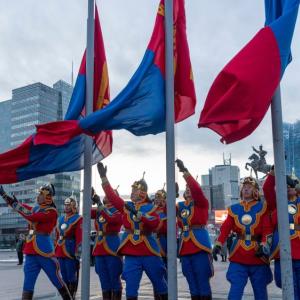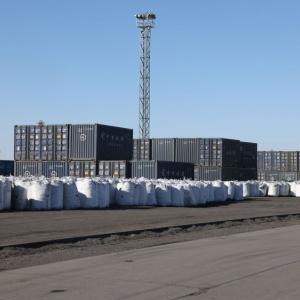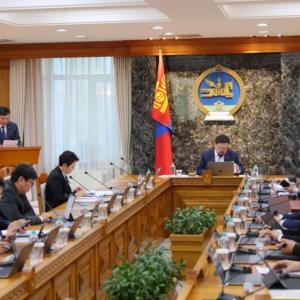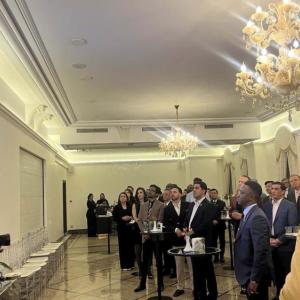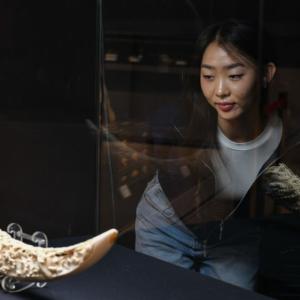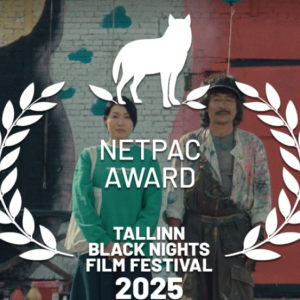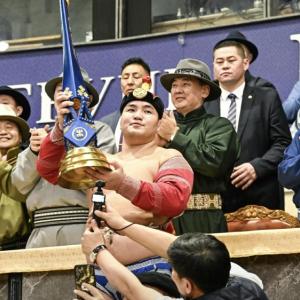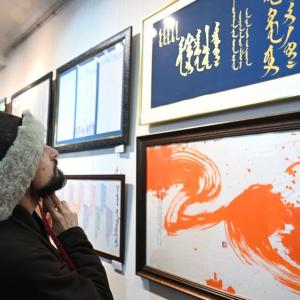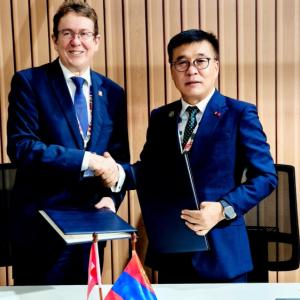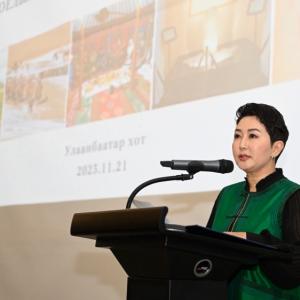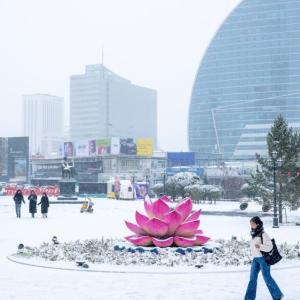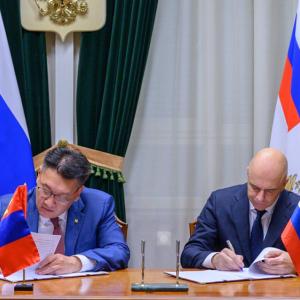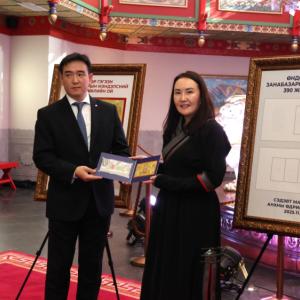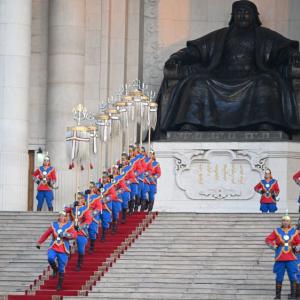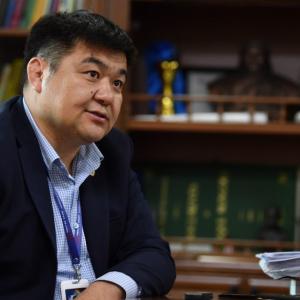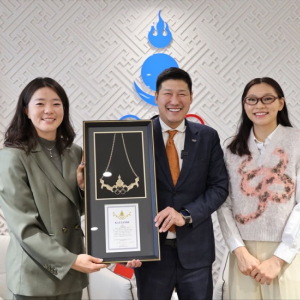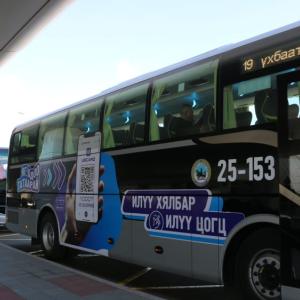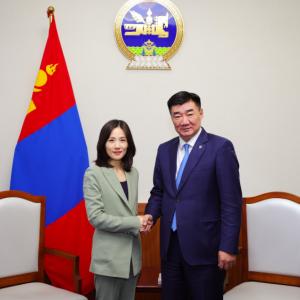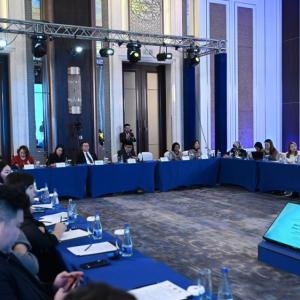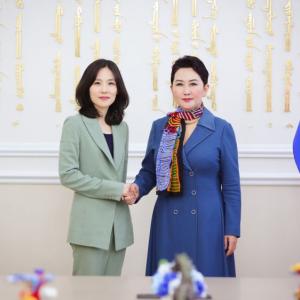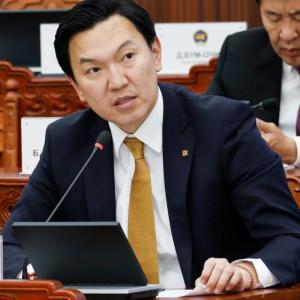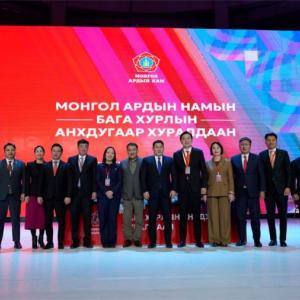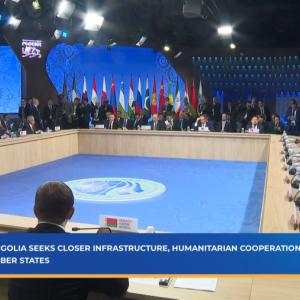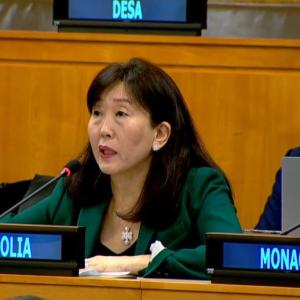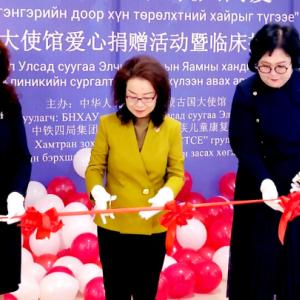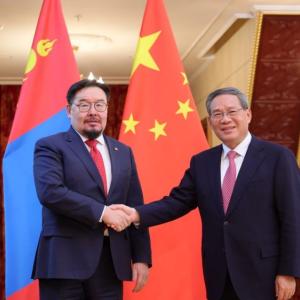Ambassador Igawahara Masaru: "The State Visit of Their Majesties the Emperor and Empress of Japan will Open a New Chapter in the Relationship between Japan and Mongolia"
Interview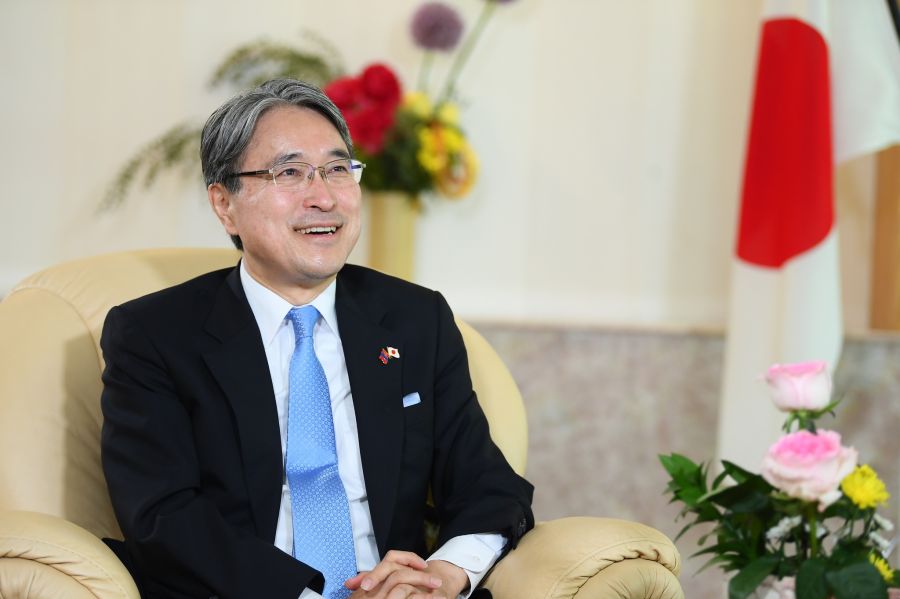
Ulaanbaatar, July 3, 2025 /MONTSAME/. An Exclusive Interview with His Excellency Igawahara Masaru, Ambassador Extraordinary and Plenipotentiary of Japan to Mongolia, on the Present and Future of Mongolia-Japan Relations.
1. Mongolian people have long been
interested in Japan. When do you think the relations between the two countries began?
What milestones in the history of Mongolia-Japan relations would you highlight?
I am pleased that the people of Mongolia are interested in Japan and feel a sense of closeness. We Japanese also feel the same sense of closeness towards Mongolia.
According to researchers, the history of relations between Japan and Mongolia dates back to ancient times. However, it can be said that the year that greatly changed this relationship was undoubtedly 1990, the year of Mongolia’s democratization. This year marks the 35th anniversary of Mongolia’s transition to democracy.
In other words, Japan and Mongolia have walked together for 35 years under fundamental values such as democracy, human rights, and the rule of law.
2. Through agencies such as JICA,
Japan has implemented numerous Official Development Assistance (ODA) Projects
in Mongolia, including infrastructure, healthcare, education, and many more.
Which of these would you say has had the most tangible impact on Mongolia?
Japan’s Official Development Assistance to Mongolia began with the grant aid project for the construction of the “Gobi” Cashmere Factory, following the conclusion of the Economic Cooperation Agreement in 1977. Until 1989, our cooperation had been carried out only in a limited fields such as technical assistance, including training programs, the dispatch of Japanese experts, the provision of equipment, and cultural grant aid.
Following Mongolia’s transition from a socialist system to a market-based economy in 1990, Japan expanded grant aid projects, also began providing yen loans for the first time, and moved into full-scale assistance across a variety of sectors.
The assistance of Japan during the challenging period of democratic transition in Mongolia played a crucial role. Japan has consistently extended its support for the human resource development of Mongolia, essential for building the future of the nation. As of fiscal year 2024, the total amount of cooperation provided by Japan to Mongolia has reached JPY 370 billion (approximately USD 2.56 billion).
Among all the timely and effective cooperation projects implemented, one I would like to highlight in particular is the Chinggis Khaan International Airport, built with a concessional loan from Japan.
This was a long-term, large-scale project with a total cost of 65.657 billion yen. It took many years to complete—from the signing of the Exchange of Notes in 2008, to the start of construction in 2013, completion in 2020, and commencement of operation in 2021.
To offer a perspective: the number
of international air travelers was about 140,000 in 1999. By 2024, that number
had grown to 1.75 million. The commissioning of Chinggis Khaan International
Airport has further enhanced public trust and safety in air travel and served
as a major catalyst for the “Go Mongolia” National Brand of Mongolia and the
development of the tourism sector in Mongolia.
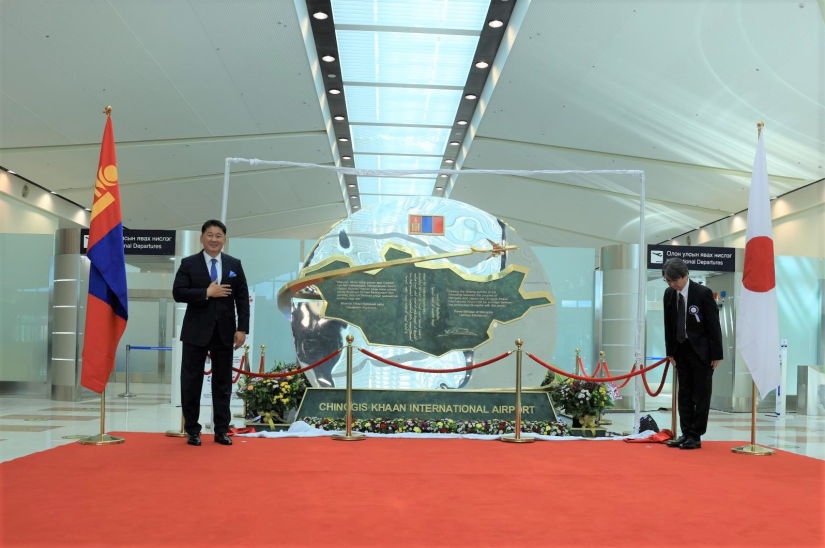 During the ceremony celebrating the first flight of the "Chinggis Khaan International Airport"
During the ceremony celebrating the first flight of the "Chinggis Khaan International Airport"
It has also had a significant economic impact, including increased air cargo volume and development in the surrounding area, contributing to elevating Mongolia’s internationalization to a new stage.
Furthermore, on January 2025, the
Government of Japan announced the resumption of its concessional loans
procedures for Mongolia, which had largely been suspended since 2017 following
the introduction of the IMF’s Extended Fund Facility (EFF).
We expect this to contribute even further to Mongolia’s development, particularly in expanding infrastructure such as the Chinggis Khaan International Airport to meet growing demand.
3. The “Grassroots Human Security Grant Aid” Program has left a lasting impression on Mongolian society. Could you share one example from your perspective?
“Grant Assistance for Grassroots Human Security Project” for Mongolia, which began in 1990, is also celebrating its 35th anniversary this year. Over the past three and a half decades, a total of 613 projects have been implemented under this initiative, amounting to approximately USD 48 million as of the end of March 2025.
Although the individual grants under
the GGP Program are relatively modest in scale and may not create wide-ranging
social impact, they bring significant direct benefits and meaningful
improvements to local communities. For instance, through this Program,
unsanitary toilets and cold classrooms have been renovated, creating safer and
more comfortable environments for children to learn and for patients to receive
healthcare.
These efforts align with the Government of Japan’s vision of supporting the creation of an inclusive society where no one is left behind. And nothing brings more joy than seeing the smiling faces of teachers, students, and patients at the renovated kindergartens, schools, and hospitals.
4. How has the Economic Partnership Agreement (EPA) between Mongolia and Japan contributed to the economic development of the two countries? In your view, which sectors in Mongolia hold the greatest potential for further expanding Japanese investment?
The Economic Partnership Agreement (EPA) serves as a vital role in strengthening mutually beneficial economic cooperation between Japan and Mongolia. Although the two countries have ratified the Agreement, I sometimes hear concerns that the trade imbalance has not improved at all. However, it is essential to recognize that the objectives of the EPA extend beyond the immediate rectification of trade imbalances through the elimination of customs duties.
The primary objective of the EPA is to
cultivate a comprehensive framework for collaboration across various sectors.
This includes not only facilitating increased trade but also promoting
investment, safeguarding intellectual property rights, fostering the
development of e-commerce, and enhancing the overall investment climate in both
countries.
Sustained dialogue and collaborative efforts between Japan and Mongolia are essential to fully harness the potential of the EPA for strengthening economic relations.
In November 2024, Mongolia hosted the 11th Japan-Mongolia Government and Business Sector Joint Committee in Ulaanbaatar to discuss various topics such as enhancing bilateral trade and investment and further strengthening cooperation between the two countries.
During the session on bilateral economic
cooperation, discussions focused on potential future collaborations in digital
technology, healthcare, startups, and business environment improvement, as well
as on promoting the Japan-Mongolia EPA. Examples of successful initiatives from
both Japan and Mongolia were shared with the aim of strengthening future
cooperation in these areas under the EPA framework.
In addition, the Embassy of Japan is currently working with the Ministry of Economy and Development of Mongolia and the Mongolian National Chamber of Commerce and Industry (MNCCI) to strengthen connections among the Regional Chambers of Commerce of Japan and their counterparts in Mongolia, including MNCCI and its affiliate institutions.
Moreover, Expo 2025 Osaka, Kansai, Japan is
being held from April to October this year. Through the expo, I hope that many
Japanese people will gain a deeper understanding of Mongolia, strengthen ties
with our country, and further expand and deepen economic exchanges.
5. Mutual understanding between the peoples of Mongolia and Japan is essential to meaningful and vibrant relations between our two countries. Could you share a personal memory or example of a heartfelt relationship between Japanese and Mongolian people?
I often hear moving stories of “person” to “person” exchanges between Japanese and Mongolian people. As many of you may know, the interaction between Japan’s famous writer, the late SHIBA Ryotaro, and the late interpreter, B. Tsevegmaa, who once worked at the Ulaanbaatar Hotel, moved many Japanese people.
In 1973, Mr. Shiba visited Mongolia to write a
travelogue and met the Japanese interpreter Ms. Tsevegmaa. However, at that
time, due to the differences in the systems of the two countries, he could not
hear detailed stories about her life. In 1990, Mr. Shiba visited Mongolia again,
interviewed Tsevegmaa, and wrote “Sogen no Ki: Record
of the Grassland”.
Her life was full of hardships, but we were deeply impressed by the way this Mongolian woman lived flexibly and strongly. Even now, her only daughter, B. Imina, and her husband, J. Baatartsogt, are good friends of our family. We are endlessly grateful that they are carrying on Tsevegmaa’s wishes and working hard for the exchange between Japan and Mongolia.
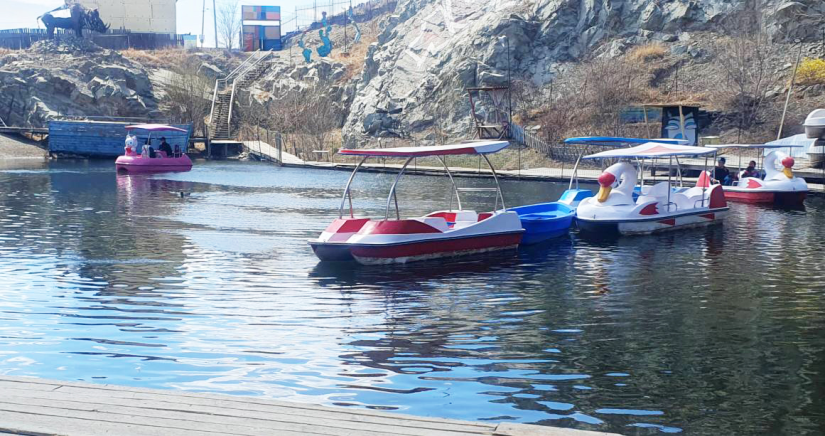
Also, in Nogoon Nuur Park in Chingeltei District, an ordinary citizen named S. Ulziitogtokh, upon learning that the land he obtained permission to use was where Japanese prisoners of war and civilians interned in Mongolia quarried stones for the construction of Ulaanbaatar city, has opened a museum to pass on that history. He originally had no connection to Japan and is not a history expert, yet as an ordinary Mongolian, his enthusiasm to research the unknown history of the relationship between the two countries and convey it to many people is admirable.
This Park is now a place where, besides locals enjoying boating in summer and skating in winter, travelers from abroad can visit and learn about the history of Japanese internees and the city of Ulaanbaatar. Such exchanges among ordinary citizens have certainly been, are, and will continue to firmly connect the relationship between Japan and Mongolia.
6. How are Mongol students who graduated from
Japanese Universities helping to build bridges that strengthen cooperation and
mutual understanding between the two countries?
Since the first Mongol student began studying in Japan on a Government Scholarship in 1976, we are now approaching the 50-year milestone of this educational cooperation. Over this period, approximately 2000 Mongolians have studied in Japan under Japanese Government (MEXT) Scholarships, and the number continues to grow when including those studying at their own expense.
Today, the alumni association of Mongolians who
studied in Japan, known as JUGAMO,
has more than 2000 members. Both scholarship recipients and self-financed
students have continued to build upon this legacy, making vital contributions
to Mongolian society and playing a significant role in advancing Japan-Mongolia
relations. This momentum remains strong.
I would like to highlight two key programs currently being supported by the Government of Japan to further human resource development in Mongolia. The first is the “Higher Engineering Education Development Project”, commonly known as M-JEED.
This yen loan program, launched in 2014, is often referred to as the initiative to train 1,000 engineers in Mongolia. Under this Project, a total of 1,098 individuals have been sent to Japan, with 1058 of them having completed their studies and returned home after finishing their academic and research programs. This initiative is not just about training individuals—it is aimed at contributing to the diversification and growth of the entire Mongolian economy. Plans for the second phase of the M-JEED Project are currently under consideration.
 The second Program is the JDS
(The Project for Human Resource Development Scholarship), which has been
implemented in Mongolia since 2001. This scholarship program targets young
civil servants working in central and local government institutions, allowing
them to pursue studies and obtain a master's or doctoral degree at a Japanese
university. The JDS’s core objective is to strengthen governance capacity in
Mongolian young civil servants. It offers participants a full scholarship and
the opportunity to learn from Japan’s wide-ranging achievements and challenges
across various fields, helping them to shape more effective, knowledge-based
public service in Mongolia.
The second Program is the JDS
(The Project for Human Resource Development Scholarship), which has been
implemented in Mongolia since 2001. This scholarship program targets young
civil servants working in central and local government institutions, allowing
them to pursue studies and obtain a master's or doctoral degree at a Japanese
university. The JDS’s core objective is to strengthen governance capacity in
Mongolian young civil servants. It offers participants a full scholarship and
the opportunity to learn from Japan’s wide-ranging achievements and challenges
across various fields, helping them to shape more effective, knowledge-based
public service in Mongolia.
To date, approximately 430 young Mongolian civil servants have studied through the JDS Program, with 384 having returned and gone on to work successfully in public institutions such as the central and local government institutions in Mongolia.
I sincerely hope that by continuing
and expanding these robust systems, more Mongolian professionals will rise to
contribute not only to their homeland but also as global citizens advancing
Mongolia’s development around the world.
7. It has been 27 years since you first came to Mongolia. In 1991, you were involved in preparations for the first-ever official visit to Mongolia by the Prime Minister of Japan. What changes in Mongolia since then have stood out to you the most?
Mongolia is very interesting in that it is dynamically developing internationally while inheriting a rich traditional culture. Mongolians have the drive to jump into studying and working abroad without hesitation, speak multiple foreign languages, and are active anywhere in the world with their inherent brightness and strength. However, they never forget their home country, and many people bring back the knowledge and experience they gained abroad after several years to contribute to the development of their homeland. Now, seeing people who have studied or worked in Japan contributing to Mongolia’s development is very dazzling and gives a sense of hope.
When I was involved in the preparations for Prime Minister Kaifu’s visit in 1991, which was the first visit by a Western leader, we were exploring the creation of a new bilateral relationship.
Mongolia was facing various issues right after democratization, but I remember that we always had respect for Mongolia and were earnestly thinking about how we could contribute.
Compared to that time, the trust relationship that has been built up is now solid, and I feel reassured by the fact that Japan and Mongolia have joined hands in all fields and that there is a history of walking together as partners.
8. His Majesty the Emperor of Japan
Naruhito and Her Majesty the Empress of Japan Masako are scheduled to pay a State
Visit to Mongolia amid the full bloom of summer. What significance does this
State Visit carry for Mongolia-Japan relations?
The visit of Their Majesties the Emperor and Empress is a significant event that should be recorded in golden letters in the history book of bilateral relations between Japan and Mongolia.
Firstly, the fact that they can visit
during the wonderful time of July, when the National Naadam Festival is also
held, is something that I think is very proud for the people of Mongolia. I am also
very pleased that the people of Mongolia will welcome Their Majesties the
Emperor and Empress with respect, wanting them to see the best of Mongolia.
Secondly, the fact that Their Majesties the Emperor and Empress responded to the enthusiasm of the people of Mongolia is, I believe, a reflection of how much they value Mongolia.
It has been seven years since Their Majesties the Emperor and Empress ascended the throne, and their foreign visits for international goodwill have been to Indonesia in 2023, the United Kingdom in 2024, and Mongolia will be the third country to receive this honor.
This visit will be an opportunity to
open a new page in the relationship between Japan and Mongolia, which has been
cultivated through various exchanges so far. Before the visit of Their
Majesties, we are renewing our determination to pass on to the next young
generation the benefits based on the trust relationship between Japan and
Mongolia, which our generation has inherited from our predecessors, with even
greater depth and breadth.
9. How do you envision the future of Mongolia-Japan relations?
Japan and Mongolia are “Special Strategic Partners for Peace and Prosperity.” It is my wish for both countries to exist together as partners that can transmit the most peaceful, most democratic, and most culturally rich aspects of Asia and even the world, and to shine their charm.
Mongolia has the advantage of being able to interact widely with many countries. Japan, in my opinion, is a country with a strong desire to contribute to the peace of humanity while having the most peace-oriented and unique culture.
These two countries are now building a good relationship of trust, and we will develop this further into a more fulfilling direction for the next generation, the generation after that, 50 years from now, and 100 years from now.
And it is my dream that Japan and Mongolia will
continue to exist as countries that transmit the most attractive aspects in the
Asian region and the international community, with their citizens enjoying
them, and as partners, and the world will recognize this and a time will come
then the relationship between Japan and Mongolia is praised.
 Ulaanbaatar
Ulaanbaatar






